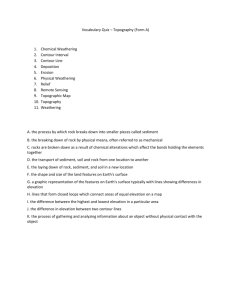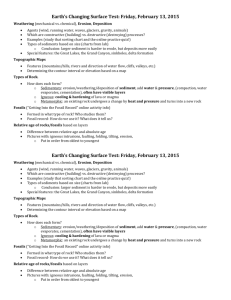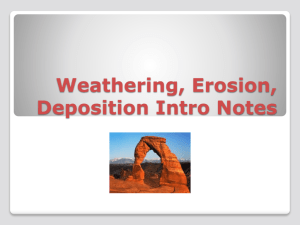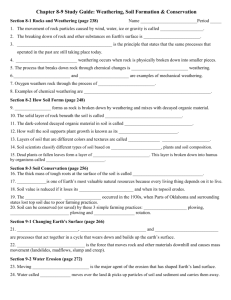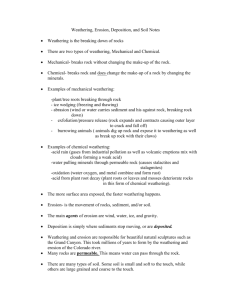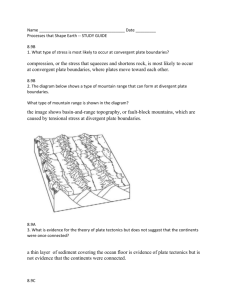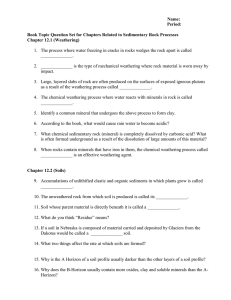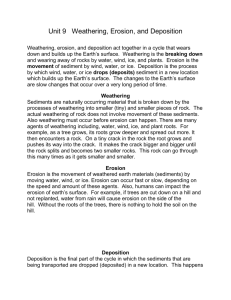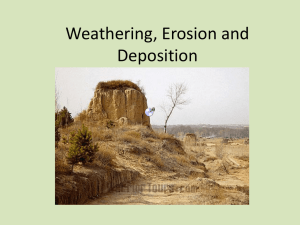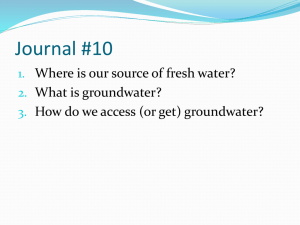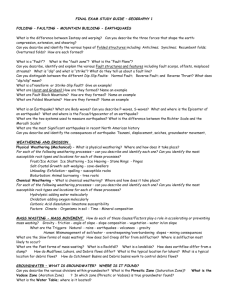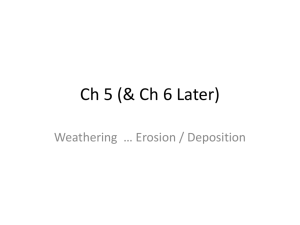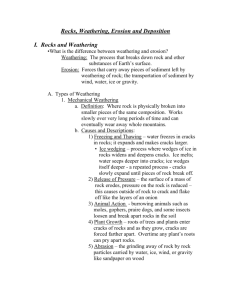Study-guide-quarter-3-test-on-weathering-erosion-and
advertisement
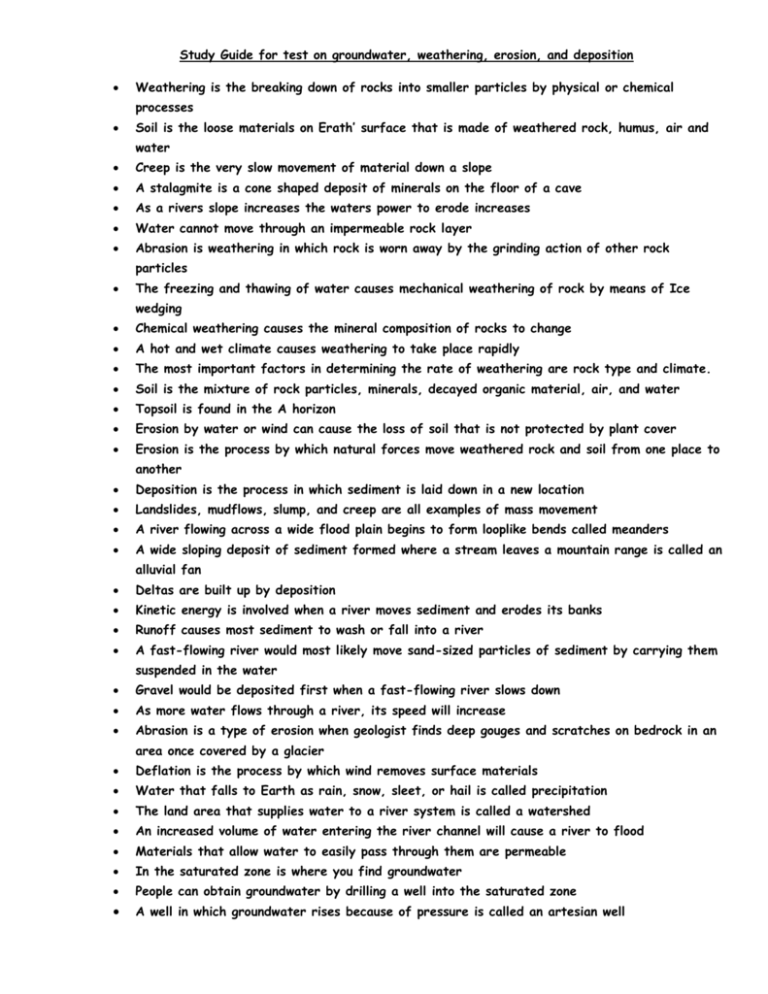
Study Guide for test on groundwater, weathering, erosion, and deposition Weathering is the breaking down of rocks into smaller particles by physical or chemical processes Soil is the loose materials on Erath’ surface that is made of weathered rock, humus, air and water Creep is the very slow movement of material down a slope A stalagmite is a cone shaped deposit of minerals on the floor of a cave As a rivers slope increases the waters power to erode increases Water cannot move through an impermeable rock layer Abrasion is weathering in which rock is worn away by the grinding action of other rock particles The freezing and thawing of water causes mechanical weathering of rock by means of Ice wedging Chemical weathering causes the mineral composition of rocks to change A hot and wet climate causes weathering to take place rapidly The most important factors in determining the rate of weathering are rock type and climate. Soil is the mixture of rock particles, minerals, decayed organic material, air, and water Topsoil is found in the A horizon Erosion by water or wind can cause the loss of soil that is not protected by plant cover Erosion is the process by which natural forces move weathered rock and soil from one place to another Deposition is the process in which sediment is laid down in a new location Landslides, mudflows, slump, and creep are all examples of mass movement A river flowing across a wide flood plain begins to form looplike bends called meanders A wide sloping deposit of sediment formed where a stream leaves a mountain range is called an alluvial fan Deltas are built up by deposition Kinetic energy is involved when a river moves sediment and erodes its banks Runoff causes most sediment to wash or fall into a river A fast-flowing river would most likely move sand-sized particles of sediment by carrying them suspended in the water Gravel would be deposited first when a fast-flowing river slows down As more water flows through a river, its speed will increase Abrasion is a type of erosion when geologist finds deep gouges and scratches on bedrock in an area once covered by a glacier Deflation is the process by which wind removes surface materials Water that falls to Earth as rain, snow, sleet, or hail is called precipitation The land area that supplies water to a river system is called a watershed An increased volume of water entering the river channel will cause a river to flood Materials that allow water to easily pass through them are permeable In the saturated zone is where you find groundwater People can obtain groundwater by drilling a well into the saturated zone A well in which groundwater rises because of pressure is called an artesian well

